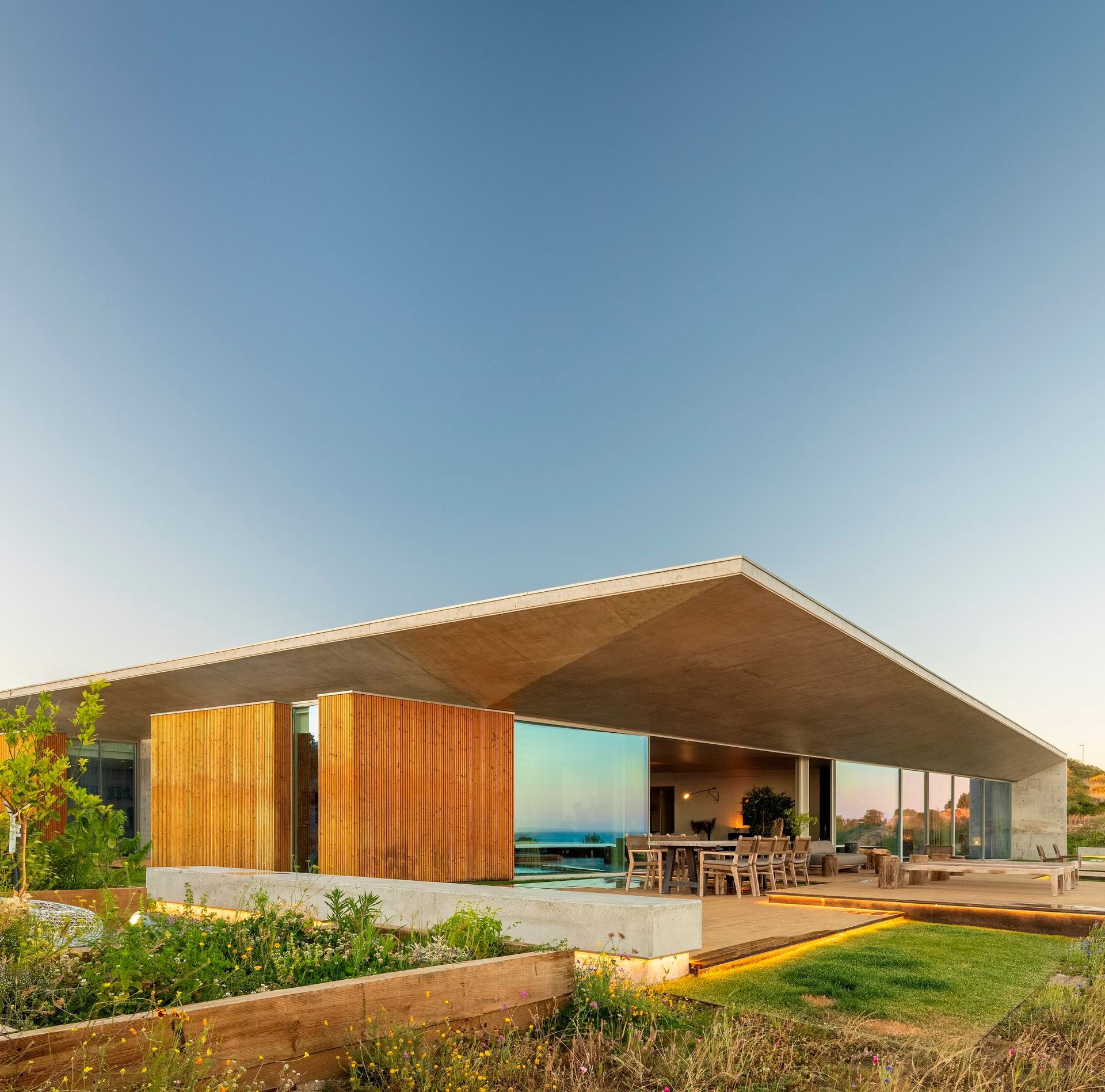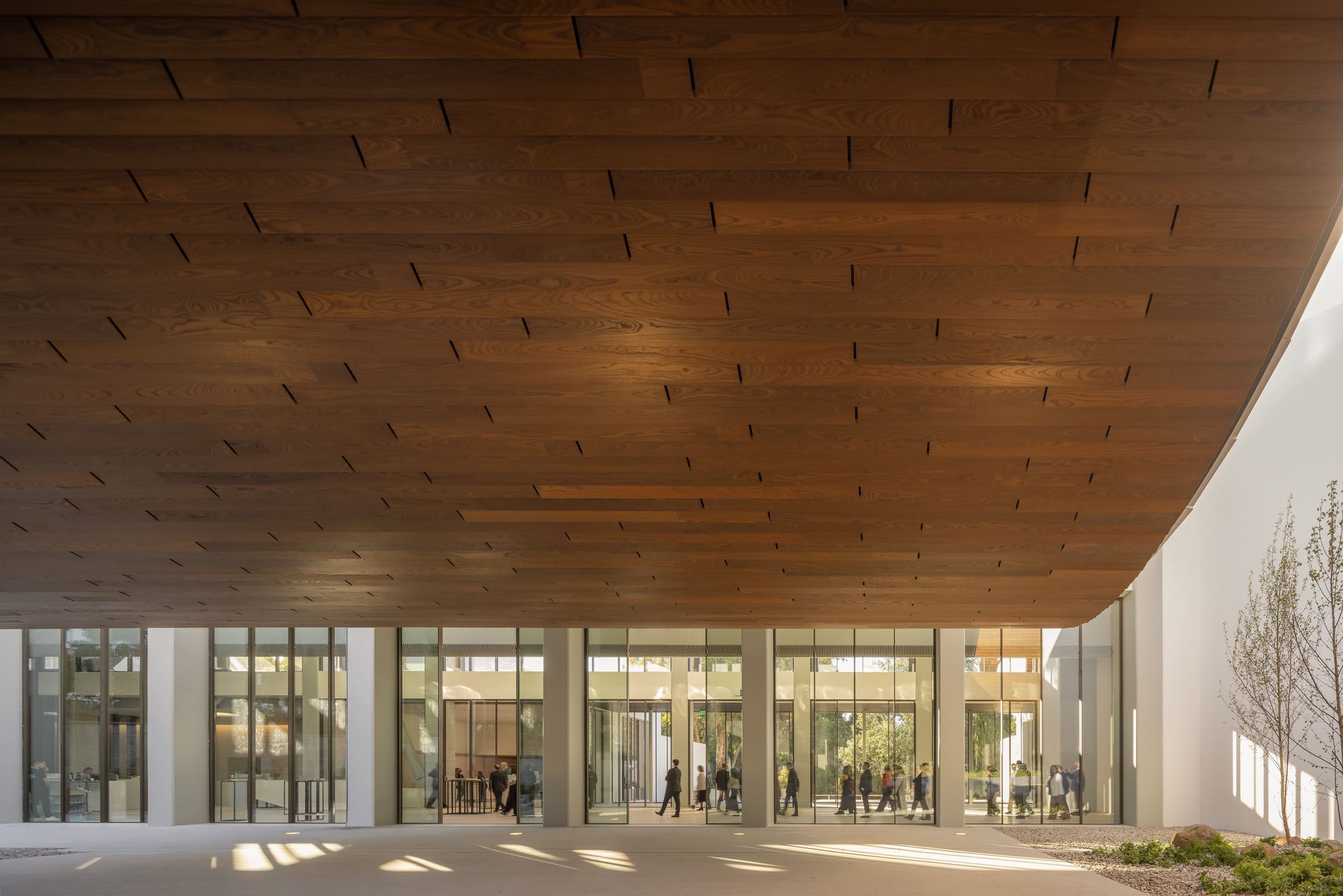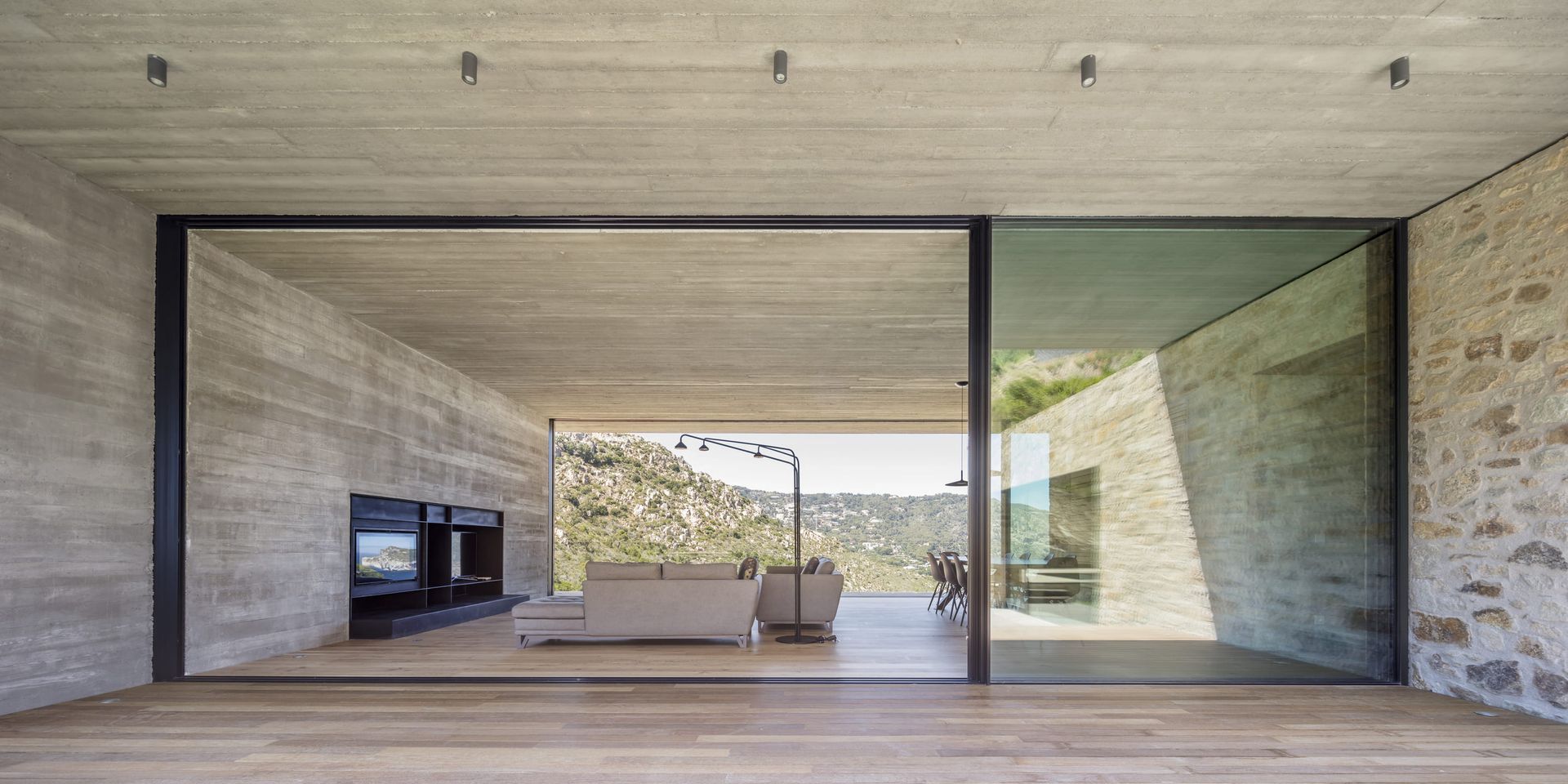TÍTULO COM O NOME DA TAG...

In a world often dominated by repetition, true originality stands out, especially in architecture. This discipline combines function, form, and emotion in the spaces where we live, work, and dream. While trends come and go, originality builds lasting value. It speaks louder than fashion, influencing culture and defining legacies. The Power of Original Thought Architecture is about shaping experiences. When architects dare to break away from convention, the results are often more than just spaces. Originality invites us to see the world differently, pushing boundaries, exploring new materials, and rethinking the relationships among light, landscape, and life. “Each new situation requires a new architecture.” — Jean Nouvel Case Study: Casa Libre, Portugal Perched on the cliffs of the Algarve coast, Casa Libre, designed by Mário Martins Atelier, expresses freedom of space, light, and thought. The architecture integrates with the surrounding landscape, rather than overpowering it, utilizing bold horizontality and deep cantilevers to create a harmonious dialogue with the Atlantic horizon. Every aspect of this project is carefully considered and intentional. The house opens entirely to the south, dissolving the boundary between interior and exterior. To achieve this radical openness, the architect relied on OTIIMA’s ultra-minimal sliding systems, which allow large glass panels to retract into the walls, revealing panoramic views without visual obstruction. Casa Libre reflects a vision of architecture that is rooted in its location and unafraid to challenge convention. The intentional use of light, material, and proportion is deeply original, not for novelty's sake, but in the pursuit of truth. This demonstrates what happens when form follows ideas rather than trends.

In architecture, as in life, authenticity doesn’t declare itself, it reveals itself. It’s invisible until, in the smallest gesture or the most unique detail, it shows its true nature. It is in this subtle precision that OTIIMA stands apart, embodying a design philosophy that goes beyond inspiration. OTIIMA is in the United States with the same vision, precision, and essence that have defined the brand from the start. Because, authenticity isn’t a choice, it’s where you come from. We’ve always believed that less reveals more. True minimalism demands transparency, purpose, and clear intention, an authenticity that can’t be faked or copied. In a world full of references, where it’s easy to lose touch with the source, we’ve held firmly to ours. Over the years, we’ve seen our name used, our ideas copied. But no one can replicate our DNA. And it’s this uniqueness that now brings our presence directly to the U.S. market — no intermediaries, no distortions, no imitations. There is only one OTIIMA.

Today, June 25, 2025, Álvaro Siza Vieira celebrates his 92nd birthday. A revolutionary in the field of architecture, Siza's legacy goes beyond buildings; it shapes our perception, feelings, and experiences of space. Born in Matosinhos, Portugal, Siza has long been recognized as a master of restraint. His architecture whispers rather than shouts, respecting the landscape and honoring tradition while simultaneously expressing a deeply contemporary language. His work navigates the interplay of light and shadow, geometry and emotion, simplicity and complexity. From the Boa Nova Tea House and the Serralves Museum in Portugal to the Iberê Camargo Foundation in Brazil, his projects demonstrate a consistent commitment to timeless design and architectural integrity. Siza has received numerous awards, including the Pritzker Prize (1992), the UIA Gold Medal, and the Golden Lion for Lifetime Achievement at the Venice Architecture Biennale. Siza famously stated, "Architects do not invent anything; they transform reality." For over seven decades, he has embodied this idea, transforming cities and lives through architecture that is as subtle as it is profound. Read also- Celebrating the 91th Birthday of Álvaro Siza Vieira: A Legacy in Architecture

When it comes to architecture, windows are never just windows. They frame views, bring in light, connect inside and out, and define the character of a space. For architects, choosing the right window system is a design decision as critical as any other. In this guide, we break down what you need to consider when specifying windows beyond aesthetics. From minimal frames to performance under pressure, this is your essential reference.
TÍTULO COM O NOME DA TAG...

In a world often dominated by repetition, true originality stands out, especially in architecture. This discipline combines function, form, and emotion in the spaces where we live, work, and dream. While trends come and go, originality builds lasting value. It speaks louder than fashion, influencing culture and defining legacies. The Power of Original Thought Architecture is about shaping experiences. When architects dare to break away from convention, the results are often more than just spaces. Originality invites us to see the world differently, pushing boundaries, exploring new materials, and rethinking the relationships among light, landscape, and life. “Each new situation requires a new architecture.” — Jean Nouvel Case Study: Casa Libre, Portugal Perched on the cliffs of the Algarve coast, Casa Libre, designed by Mário Martins Atelier, expresses freedom of space, light, and thought. The architecture integrates with the surrounding landscape, rather than overpowering it, utilizing bold horizontality and deep cantilevers to create a harmonious dialogue with the Atlantic horizon. Every aspect of this project is carefully considered and intentional. The house opens entirely to the south, dissolving the boundary between interior and exterior. To achieve this radical openness, the architect relied on OTIIMA’s ultra-minimal sliding systems, which allow large glass panels to retract into the walls, revealing panoramic views without visual obstruction. Casa Libre reflects a vision of architecture that is rooted in its location and unafraid to challenge convention. The intentional use of light, material, and proportion is deeply original, not for novelty's sake, but in the pursuit of truth. This demonstrates what happens when form follows ideas rather than trends.

In architecture, as in life, authenticity doesn’t declare itself, it reveals itself. It’s invisible until, in the smallest gesture or the most unique detail, it shows its true nature. It is in this subtle precision that OTIIMA stands apart, embodying a design philosophy that goes beyond inspiration. OTIIMA is in the United States with the same vision, precision, and essence that have defined the brand from the start. Because, authenticity isn’t a choice, it’s where you come from. We’ve always believed that less reveals more. True minimalism demands transparency, purpose, and clear intention, an authenticity that can’t be faked or copied. In a world full of references, where it’s easy to lose touch with the source, we’ve held firmly to ours. Over the years, we’ve seen our name used, our ideas copied. But no one can replicate our DNA. And it’s this uniqueness that now brings our presence directly to the U.S. market — no intermediaries, no distortions, no imitations. There is only one OTIIMA.

Today, June 25, 2025, Álvaro Siza Vieira celebrates his 92nd birthday. A revolutionary in the field of architecture, Siza's legacy goes beyond buildings; it shapes our perception, feelings, and experiences of space. Born in Matosinhos, Portugal, Siza has long been recognized as a master of restraint. His architecture whispers rather than shouts, respecting the landscape and honoring tradition while simultaneously expressing a deeply contemporary language. His work navigates the interplay of light and shadow, geometry and emotion, simplicity and complexity. From the Boa Nova Tea House and the Serralves Museum in Portugal to the Iberê Camargo Foundation in Brazil, his projects demonstrate a consistent commitment to timeless design and architectural integrity. Siza has received numerous awards, including the Pritzker Prize (1992), the UIA Gold Medal, and the Golden Lion for Lifetime Achievement at the Venice Architecture Biennale. Siza famously stated, "Architects do not invent anything; they transform reality." For over seven decades, he has embodied this idea, transforming cities and lives through architecture that is as subtle as it is profound. Read also- Celebrating the 91th Birthday of Álvaro Siza Vieira: A Legacy in Architecture

When it comes to architecture, windows are never just windows. They frame views, bring in light, connect inside and out, and define the character of a space. For architects, choosing the right window system is a design decision as critical as any other. In this guide, we break down what you need to consider when specifying windows beyond aesthetics. From minimal frames to performance under pressure, this is your essential reference.
TÍTULO COM O NOME DA TAG...

In a world often dominated by repetition, true originality stands out, especially in architecture. This discipline combines function, form, and emotion in the spaces where we live, work, and dream. While trends come and go, originality builds lasting value. It speaks louder than fashion, influencing culture and defining legacies. The Power of Original Thought Architecture is about shaping experiences. When architects dare to break away from convention, the results are often more than just spaces. Originality invites us to see the world differently, pushing boundaries, exploring new materials, and rethinking the relationships among light, landscape, and life. “Each new situation requires a new architecture.” — Jean Nouvel Case Study: Casa Libre, Portugal Perched on the cliffs of the Algarve coast, Casa Libre, designed by Mário Martins Atelier, expresses freedom of space, light, and thought. The architecture integrates with the surrounding landscape, rather than overpowering it, utilizing bold horizontality and deep cantilevers to create a harmonious dialogue with the Atlantic horizon. Every aspect of this project is carefully considered and intentional. The house opens entirely to the south, dissolving the boundary between interior and exterior. To achieve this radical openness, the architect relied on OTIIMA’s ultra-minimal sliding systems, which allow large glass panels to retract into the walls, revealing panoramic views without visual obstruction. Casa Libre reflects a vision of architecture that is rooted in its location and unafraid to challenge convention. The intentional use of light, material, and proportion is deeply original, not for novelty's sake, but in the pursuit of truth. This demonstrates what happens when form follows ideas rather than trends.

In architecture, as in life, authenticity doesn’t declare itself, it reveals itself. It’s invisible until, in the smallest gesture or the most unique detail, it shows its true nature. It is in this subtle precision that OTIIMA stands apart, embodying a design philosophy that goes beyond inspiration. OTIIMA is in the United States with the same vision, precision, and essence that have defined the brand from the start. Because, authenticity isn’t a choice, it’s where you come from. We’ve always believed that less reveals more. True minimalism demands transparency, purpose, and clear intention, an authenticity that can’t be faked or copied. In a world full of references, where it’s easy to lose touch with the source, we’ve held firmly to ours. Over the years, we’ve seen our name used, our ideas copied. But no one can replicate our DNA. And it’s this uniqueness that now brings our presence directly to the U.S. market — no intermediaries, no distortions, no imitations. There is only one OTIIMA.

Today, June 25, 2025, Álvaro Siza Vieira celebrates his 92nd birthday. A revolutionary in the field of architecture, Siza's legacy goes beyond buildings; it shapes our perception, feelings, and experiences of space. Born in Matosinhos, Portugal, Siza has long been recognized as a master of restraint. His architecture whispers rather than shouts, respecting the landscape and honoring tradition while simultaneously expressing a deeply contemporary language. His work navigates the interplay of light and shadow, geometry and emotion, simplicity and complexity. From the Boa Nova Tea House and the Serralves Museum in Portugal to the Iberê Camargo Foundation in Brazil, his projects demonstrate a consistent commitment to timeless design and architectural integrity. Siza has received numerous awards, including the Pritzker Prize (1992), the UIA Gold Medal, and the Golden Lion for Lifetime Achievement at the Venice Architecture Biennale. Siza famously stated, "Architects do not invent anything; they transform reality." For over seven decades, he has embodied this idea, transforming cities and lives through architecture that is as subtle as it is profound. Read also- Celebrating the 91th Birthday of Álvaro Siza Vieira: A Legacy in Architecture

When it comes to architecture, windows are never just windows. They frame views, bring in light, connect inside and out, and define the character of a space. For architects, choosing the right window system is a design decision as critical as any other. In this guide, we break down what you need to consider when specifying windows beyond aesthetics. From minimal frames to performance under pressure, this is your essential reference.
TÍTULO COM O NOME DA TAG...

In a world often dominated by repetition, true originality stands out, especially in architecture. This discipline combines function, form, and emotion in the spaces where we live, work, and dream. While trends come and go, originality builds lasting value. It speaks louder than fashion, influencing culture and defining legacies. The Power of Original Thought Architecture is about shaping experiences. When architects dare to break away from convention, the results are often more than just spaces. Originality invites us to see the world differently, pushing boundaries, exploring new materials, and rethinking the relationships among light, landscape, and life. “Each new situation requires a new architecture.” — Jean Nouvel Case Study: Casa Libre, Portugal Perched on the cliffs of the Algarve coast, Casa Libre, designed by Mário Martins Atelier, expresses freedom of space, light, and thought. The architecture integrates with the surrounding landscape, rather than overpowering it, utilizing bold horizontality and deep cantilevers to create a harmonious dialogue with the Atlantic horizon. Every aspect of this project is carefully considered and intentional. The house opens entirely to the south, dissolving the boundary between interior and exterior. To achieve this radical openness, the architect relied on OTIIMA’s ultra-minimal sliding systems, which allow large glass panels to retract into the walls, revealing panoramic views without visual obstruction. Casa Libre reflects a vision of architecture that is rooted in its location and unafraid to challenge convention. The intentional use of light, material, and proportion is deeply original, not for novelty's sake, but in the pursuit of truth. This demonstrates what happens when form follows ideas rather than trends.

In architecture, as in life, authenticity doesn’t declare itself, it reveals itself. It’s invisible until, in the smallest gesture or the most unique detail, it shows its true nature. It is in this subtle precision that OTIIMA stands apart, embodying a design philosophy that goes beyond inspiration. OTIIMA is in the United States with the same vision, precision, and essence that have defined the brand from the start. Because, authenticity isn’t a choice, it’s where you come from. We’ve always believed that less reveals more. True minimalism demands transparency, purpose, and clear intention, an authenticity that can’t be faked or copied. In a world full of references, where it’s easy to lose touch with the source, we’ve held firmly to ours. Over the years, we’ve seen our name used, our ideas copied. But no one can replicate our DNA. And it’s this uniqueness that now brings our presence directly to the U.S. market — no intermediaries, no distortions, no imitations. There is only one OTIIMA.

Today, June 25, 2025, Álvaro Siza Vieira celebrates his 92nd birthday. A revolutionary in the field of architecture, Siza's legacy goes beyond buildings; it shapes our perception, feelings, and experiences of space. Born in Matosinhos, Portugal, Siza has long been recognized as a master of restraint. His architecture whispers rather than shouts, respecting the landscape and honoring tradition while simultaneously expressing a deeply contemporary language. His work navigates the interplay of light and shadow, geometry and emotion, simplicity and complexity. From the Boa Nova Tea House and the Serralves Museum in Portugal to the Iberê Camargo Foundation in Brazil, his projects demonstrate a consistent commitment to timeless design and architectural integrity. Siza has received numerous awards, including the Pritzker Prize (1992), the UIA Gold Medal, and the Golden Lion for Lifetime Achievement at the Venice Architecture Biennale. Siza famously stated, "Architects do not invent anything; they transform reality." For over seven decades, he has embodied this idea, transforming cities and lives through architecture that is as subtle as it is profound. Read also- Celebrating the 91th Birthday of Álvaro Siza Vieira: A Legacy in Architecture

When it comes to architecture, windows are never just windows. They frame views, bring in light, connect inside and out, and define the character of a space. For architects, choosing the right window system is a design decision as critical as any other. In this guide, we break down what you need to consider when specifying windows beyond aesthetics. From minimal frames to performance under pressure, this is your essential reference.





